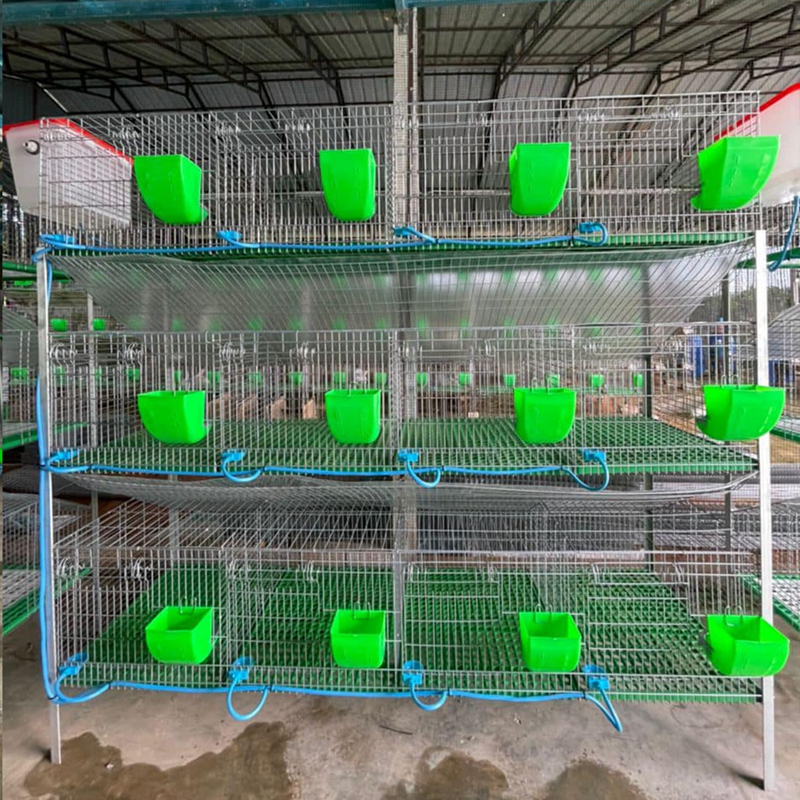Innovative Solutions for Efficient Feed Processing Equipment
okt . 16, 2024 06:03 Back to list
Innovative Solutions for Efficient Feed Processing Equipment
Understanding Feed Processing Machines Revolutionizing Animal Nutrition
In the realm of agriculture and animal husbandry, the importance of high-quality animal feed cannot be overstated. Feed processing machines play a crucial role in ensuring that livestock, poultry, and aquaculture receive the right nutrition, leading to improved growth rates, better health, and overall productivity. This article explores the significance, types, and advancements in feed processing machines, illustrating their pivotal role in modern farming practices.
Importance of Feed Processing
Feed processing involves the transformation of raw ingredients into usable feed formulations. This is an essential step to enhance the nutritional value and digestibility of animal feeds. Processed feeds are generally more palatable and ensure the animals receive their dietary requirements efficiently. Furthermore, feed processing helps in eliminating pathogens and toxins present in raw materials, ensuring that the feed is safe for animal consumption.
Efficient feed processing is also vital for minimizing wastage. Raw ingredients can often be bulky and difficult to manage. By using feed processing machines, farmers can produce concentrated feed that is easier to handle, transport, and store. This ultimately reduces the overall cost of animal production and boosts farm profitability.
Types of Feed Processing Machines
Feed processing machines come in various types, each catering to different stages of feed production
. Here are some of the most commonly used machines in the industry1. Hammer Mills These are used for grinding raw materials into a fine powder. The hammer mill plays a significant role in increasing the surface area of the ingredients, making them easier to digest and enhancing nutrient absorption.
2. Mixers After grinding the raw materials, mixers are utilized to achieve a homogeneous mixture of ingredients. This step is critical for ensuring that every pellet or feed granule has a uniform nutritional profile.
feed processing machine

3. Pellet Mills One of the most important machines in feed processing, pellet mills convert the mixed feed into pellets. Pelleting not only makes the feed easier to handle, but it also enhances digestibility, reduces feed wastage, and improves the palatability of the feed for animals.
4. Extruders These machines use high temperature and pressure to create expanded feed products, which are particularly common in aquaculture feeds. Extrusion helps in improving the nutritional value and maintaining the feed's stability in water.
5. Coolers and Dryers After feed is processed, it may need cooling or drying to ensure proper storage and prevent spoilage. These machines help in controlling the moisture content, thereby extending the shelf life of the feed.
Recent Advancements in Feed Processing Technology
With continuous advancements in technology, feed processing machines have evolved to become more efficient and user-friendly. Modern machines are often equipped with automation features that allow for precise control of the processing parameters. This not only reduces labor costs but also enhances product consistency.
Additionally, innovations such as the use of alternative ingredients, like insect protein and algae, are being incorporated into feed formulations. Feed processing machines are adapting to handle these new materials, ensuring that the industry can meet the evolving nutritional demands of livestock.
Another significant trend is the emphasis on sustainability. Many feed processing manufacturers are now focusing on energy-efficient machinery and processes that reduce waste. This aligns with the growing demand for environmentally friendly agricultural practices, essential for sustainable food production.
Conclusion
Feed processing machines are indispensable tools in the agriculture sector, playing a vital role in the production of high-quality animal feed. By improving the nutritional quality, safety, and palatability of feeds, these machines contribute to healthier livestock, better productivity, and, ultimately, a more sustainable food system. As technology continues to advance, the future of feed processing promises to be even more efficient, innovative, and aligned with the industry's challenges and opportunities. Embracing these changes is crucial for farmers and feed manufacturers who aspire to thrive in a dynamic and competitive market.
-
Automatic Feeding Line System - Anping Yize | Efficiency&Durability
NewsJul.29,2025
-
Automatic Feeding Line System - Anping Yize|Poultry Efficiency&Durability
NewsJul.29,2025
-
Automatic Feeding Line System-Anping County Yize Metal Products Co., Ltd.|Durable PP Material&Easy Maintenance
NewsJul.29,2025
-
Automatic Feeding Line System-Pan Feeder Nipple Drinker|Anping County Yize Metal Products Co., Ltd.
NewsJul.29,2025
-
Hot Sale 24 & 18 Door Rabbit Cages - Premium Breeding Solutions
NewsJul.25,2025
-
Automatic Feeding Line System Pan Feeder Nipple Drinker - Anping County Yize Metal Products Co., Ltd.
NewsJul.21,2025






